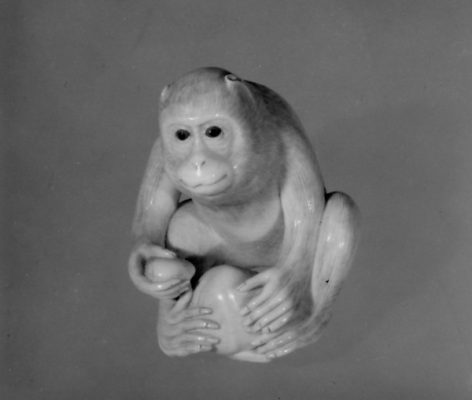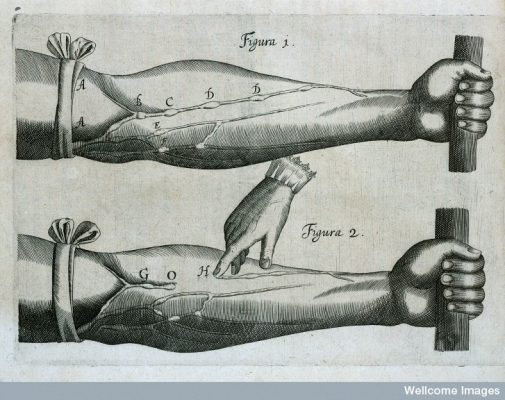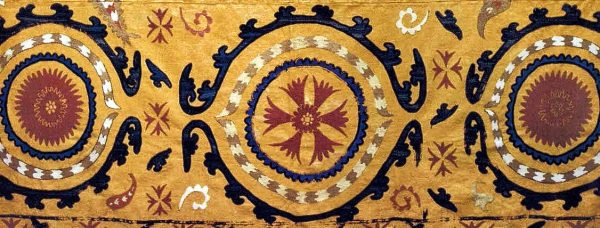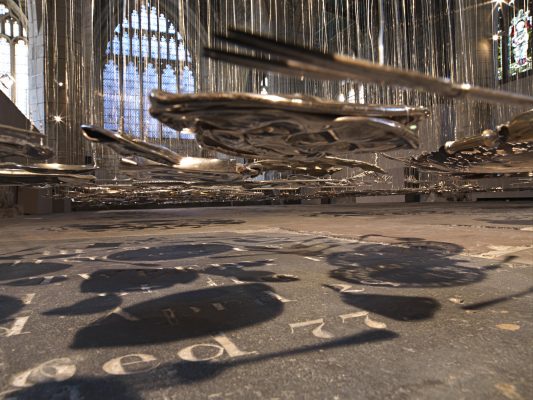Small white monkeys stretch around in the dirt beneath a tree but do not get dirty. They pick themselves up and dash away across the concrete plane,
bobbing out of sight. They are silent.
…
The following evening is my dinner with the curator. I wear a fresh white
gown.
During le plat principal my left bell sleeve slides through a rich sauce as I
reach for my glass, but when I retract it the sauce slides right off. I bother the sleeve edge with my fingers for the rest of the evening.
The white monkeys watch me from a pylon, far away.
— ‘The Engine’
- CAR SICKNESS
The past should go away but it never does…
And it is like a swimming pool at the foot of
the stairs…
– Poemland, Chelsey Minnis
About three years ago I sustained an injury, a significant injury to my body, and in the wake of this my mind did something both for and against itself. I experienced what is sometimes referred to as an ‘unfreezing’ – that is, I reaccessed a traumatic experience, an instance of sexual assault, that had taken place six years previously, in my early twenties, the current flesh wound acting as a catalyst for this sudden thaw. Shortly, I found myself in hell. I began writing a long poem in order to manage, though I did not yet recognise the significance of this activity. ‘The Engine’ was a poem about another world. Inhabiting this world was a brood of small white monkeys that moved around like injured birds, like furtive healthy birds, like monkeys. There was no pretence in the poem, though it might sound impossible…
In ‘friday.’, Anna Mendelssohn, an important poet of zero pretence, writes,
Poetry can be stripped. Racketeers compromise
advantageously
Unracked by the objects of their disquieted attention
Work is too much trouble to those who don’t love their
subject
And literature is lost, lost to the word work, lost to the
temptation
of gradgrind rectification and its concomitant collapse …
I know I will have to work hard to explain myself, though I am racked, I am disquieted. It took me too long to recognise ‘The Engine’ for what it was: the story of my life until now – or quite recently. It took me longer still to recognise the monkeys for what they were, collectively: my white symbol of shame.
Soon after the assault I managed to shut down an entire part of my brain while I was unconsciously at work, establishing the conditions in which it would one day be safe to reconnect with my thoughts about the event. This is not to say that I had induced a wilful amnesia, only that I could bump an elbow on the corner of the memory without the least emotional or physical reaction. When thoughts of the attack and my attacker surfaced, which for a long time happened rarely, I would calmly pick up my oar and poke their unresisting bodies back into the canal’s depths. I would resume life.
After the thaw, however, such thoughts became unyielding and intrusive. Repressing intrusive thoughts unleashes a series of physical effects (thirst, dizziness, inability to focus) that are in many ways worse than running through the thoughts themselves. I would worry about seeing my attacker on the street at the most implausible moments. How would I react? Would I be cordial, pretend nothing had happened (as he has)? Or pretend that something did happen, but that that something was consensual (as he has)? I tried to convince myself that nothing had happened.
When my shame and trauma were at their searing, obliterative peak, my attacker would be a peripheral figure in almost every one of my dreams, where I would move past him without addressing him.
To look at me during this time you likely wouldn’t have picked up on anything. When you go through something like this, you appear unchanged on the surface, but behind the skin brews a nasty illness, like mercury poisoning. What can I compare the feeling of this period to?…
When I was an infant we moved abroad. Every summer we would drive through Calais to visit my maternal grandparents in the other country. I get car sick to this day, but it was at its most horrendous when I was small. We couldn’t drive twenty minutes without me going pale, closing my eyes and requesting a stop, so during these very long journeys the nausea was something unbearable – I felt that it would never end. An acute and interminable nausea, then. And somewhere between the meetings and the deadlines and the social arrangements there would usually be a lay-by where I could at least stop and be sick, with some degree of privacy, before having to gather myself and move forward again.
I had to get up but I felt heavy, as though there had been a change in gravity or the make-up of my blood had somehow rearranged itself in such a way that that the pull on my body now figured differently within the existing system. I kept falling asleep. In the final play of the Oresteia, Aeschylus’ trilogy of Greek tragedies, the Erinys – chthonic female deities of vengeance – become strangely sluggish and sleepy, and their mission to bolster Clytemnestra’s desire to avenge her daughter’s death falls by the wayside. On an Apulian red-figure bell-krater (an ancient black and red vase) housed in the Louvre, Clytemnestra’s shade or ghost (as she manifests in the underworld) can be seen trying to rouse the somnolent Erinys without any luck; the latter are draped over one another with their eyes closed, fully-clothed, as though they had had too much to drink at a party. Their characteristic ferocity has been deactivated, though it’s not really clear how or why. Or when. My own sense, at a certain point, was one of having been incrementally plied with a cumulatively fatal poison. I wanted an antibiotic.
I made it my business to read, to learn, and in this way to integrate the experience and resultant trauma into my life. But reading, as most people are aware, exacerbates motion sickness. This is because your eyes take in the sight of the book before you (as well as the interior of the vehicle in your peripheral vision) and communicate the message to your brain that you are still, while your body – sensing velocity, all the minor calibrations – states the opposite. I knew this too, of course, and so I resolved to begin gently.
- POWER OF THE CAT
Carolee Schneemann is among the world’s foremost creators of cat art. I delight in telling people about Fuses, a video piece in which Schneemann and her then partner have sex vertically in front of an indifferent Kitch (her then cat), or Infinity Kisses, a sustained project made up of photographic evidence of Schneemann’s cats’ daily caresses. Infinity Kisses began in 1981 with Cluny, the first of the artist’s cats to find his human in bed in the morning (as cats are wont to do) and plant firm kisses on her mouth as though thirsting, like a lover (somewhat less usual). In a short text in Art in America, Schneemann speaks of her personal history with cats and of the cultural history of the species, including the well-known veneration of cats by the Ancient Egyptians and the contrasting view taken later, elsewhere:
Cats became sacred in Egypt because they preserved all the grain by going after the mice and rats. This reverence could be very extreme. If visitors from other countries accidently killed a cat, they would be killed. Local people would readily sacrifice their lives for that of a cat. But by the time we’re in medieval Europe, the cat is an obscenity; it belongs to witchcraft and unknown powers. It has to be mutilated and killed just as women who had unknown, inexplicable powers were denounced as witches, mutilated and killed. One of the ways they killed both women considered witches and cats considered to be witches’ companions was to stuff the cat in the woman’s vagina; the cat would claw itself and the woman.
More recently, cats have been invoked as scapegoats for cot deaths. This strange myth describes the cat, having caught the scent of milk on the baby’s breath, as being heavily drawn to and inadvertently smothering the sleeping infant. In another, more vehement iteration of the same myth, the cat is said to suck the unattended supine baby’s breath away with intent.
Cats love the taste of antifreeze, but the liquid’s crucial ingredient, ethylene glycol, kills them painfully within hours. Cats sometimes ingest the stuff accidentally, during the winter, when it will occasionally leak from cars and spill from poorly capped bottles. But in August 2014, in Lancaster, Donald Waterworth indulged his hatred of cats by setting out dishes of tuna laced with the poison. One woman living nearby lost four cats over two weeks. Katherine Hall, ‘a wealthy woman’, had, in 2009, done the very same thing, killing both her next-door neighbours’ cats. ‘We’ve spent a lot of money on the garden,’ said Hall in a statement. ‘I wanted to stop them leaving nasty smells …’.
I witnessed the most remarkable instance of an individual’s revulsion of cats during my second ever visit to New York. I had been invited to a friend of a friend’s house in Brooklyn for a drink. I’d never met the friend’s friend, and the house turned out to be a luxe four-storey town house paid for by this man’s wife’s family fortune. Every weekend the man’s wife and their daughter would decamp to her parents’ place (maybe in Upstate New York or the Hamptons), and he would be left alone, in Brooklyn, surrounded by gaudy statement art pieces in this inordinately fancy house. I can no longer remember how the topic of cats arose, but as soon as I heard the anger coming out of this man I decided not to say a word; I listened, fixated. I was the only woman in the room. ‘Nasty animals, nasty animals,’ he repeated. He was looking right at me, though not with his eyes.
‘In cultural history,’ writes Schneemann, ‘the detestation of the domestic cat is always parallel to suppressed rage at difference in general and at all aspects of the female body and female orgasm in particular.’
Also Schneemann:
It’s tricky for me to emphasize the power of the cat when what surrounds its hard-to-elucidate power today is sentimental indulgence. I think such ideas are ultimately transformative, however, because the acceptance of the tenderness and thoughtfulness of the cat relates directly to the acceptance of female sexuality: its subtlety, its complexity.
My own cat looked after me until she stopped being able to eat and began lying down in her litter tray, which she was no longer really using as a litter tray because she was no longer really able to eat. I knew she would die when I saw her lay down in there: it was a shocking thing for a cat to do. She was in so much pain, she just wanted to be sucked away. We followed her wishes a few days later. The night before she died the sky was lilac.
In the years before she died, she would find me in bed in the day and we would go to sleep together in a warm knot for weeks at a time. We were time travelling. After a while she wouldn’t let me sleep like this anymore. She wanted me to get up in the mornings, and she made sure that I did. She wanted me up for eight.
*
Sophie Collins’s small white monkeys: on self-expression, self-help, and shame is forthcoming from Book Works. It is available for pre-order here: https://www.bookworks.org.uk/node/1929




